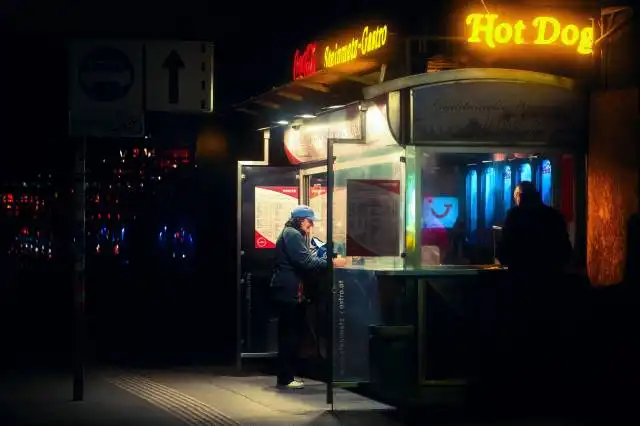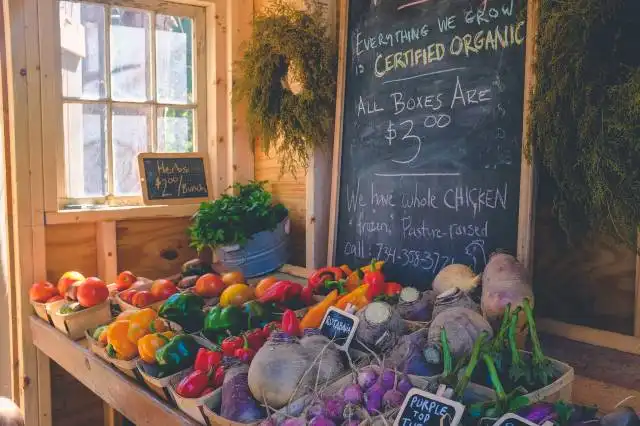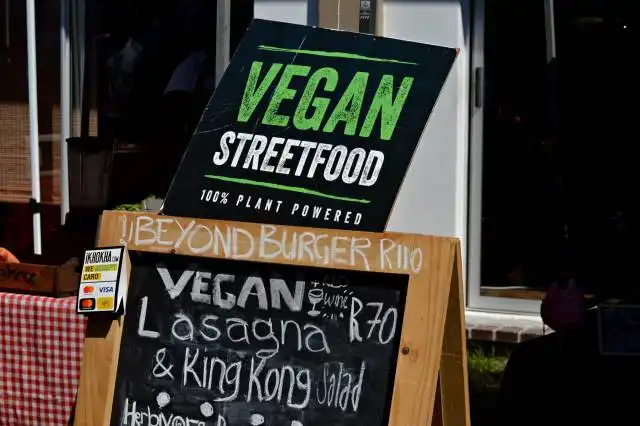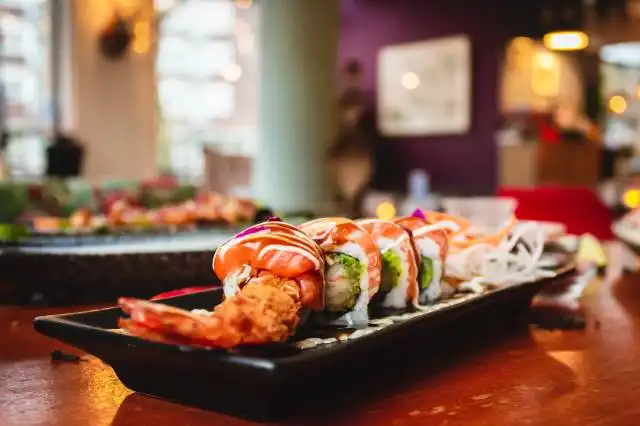Start a Fine Dining Restaurant
Orchestrating a Symphony of Exquisite Flavors: Your Own Fine Dining Expedition
| Updated


FINE DINING RESTAURANT
Are you a gastronomic enthusiast with an ardent love for culinary arts? Then the idea of starting a Fine Dining Restaurant might just blow your culinary whistle. Consider it like arranging a symphony where all sorts of delectable and appetizing gourmet hits the taste buds of your customers in perfect harmony. This type of business serves sumptuous cuisine in an elegant ambience, often exuding luxury and exclusivity, which ultimately enriches the dining experience to a splendid level. This could be your perfect palette to plate a masterpiece!
Jump to Business Plan
RELATED BUSINESS IDEAS
Browse ALL Food & Beverage Entrepreneurship Business Ideas
Discover Your Perfect Domain
Unlock the door to your online success with our hand-picked selection of premium domain names. Whether you're starting a new venture or rebranding an existing one, the right domain can set the tone for your digital presence. Browse through our curated list, each with its unique potential to enhance your brand's visibility and credibility.
FINE DINING RESTAURANT MINI BUSINESS PLAN
This a quick reality check to help you identify the strengths and weaknesses of your business concept before you dive in.
Expected Percent Margins:
- Gross Margin: 60-70%
- Net Profit Margin: 10-15%
Earnings Expectations:
- Daily Earnings: $1,000 - $5,000
- Weekly Earnings: $7,000 - $35,000
- Monthly Earnings: $30,000 - $150,000
- Annual Earnings: $360,000 - $1,800,000
From these revenues, note you'll need to pay operational costs like salaries, rent, utilities, food cost, and taxes. Net profit margin will be lower and may range as listed above.
Actions to Achieve These Numbers:
Menu Pricing and Costing:
- Create unique, enticing, and high-quality dishes that allow for high-profit margins.
- Regularly evaluate and optimize menu according to popularity and profitability.
Supply Management:
- Build relationships with reliable food and drink suppliers.
- Regularly review and negotiate supplier contracts to keep costs manageable.
Marketing and Customer Acquisition:
- Establish a strong online presence through website and social media.
- Regularly host events or offer discounts during off-peak hours to draw customers.
Staffing:
- Hire experienced chefs and attentive, professional server staff.
- Provide continuous training and motivation to uphold high standards of service.
Premises:
- Choose an attractive, accessible location with consideration for cost.
- Ensure interior design matches the upscale dining experience.
Operational Efficiency:
- Streamline processes for ordering, cooking, serving, and billing to reduce wait times.
- Regularly review and monitor food waste, energy consumption, and other hidden costs.
Remember these are just general estimates and actions. The actual figures may vary depending on various factors like your restaurant's location, local competition, and the general state of the economy. Always consider getting tailored advice from a professional business consultant.
NOT WHAT YOU HAD IN MIND? Here are more ideas



Browse ALL Food & Beverage Entrepreneurship Business Ideas
Grab Your Business Website Name
Before you get caught up in the whirlwind of setting up your business, invest in a domain name. It's a small but significant step that lays the foundation for your brand and makes it easier for customers to find and trust you. Just like you wouldn't build a house without securing the land first, don't build a business without securing your domain name.
"Why? Can't that wait?" Here's why it shouldn't
Step 1: Determining if Starting a Fine Dining Restaurant is the Right Endeavor
Breakdown of Startup Expenses
When starting a fine dining restaurant, it is important to understand the startup costs associated with the venture. These costs can include the cost of the building or space, the cost of equipment, the cost of supplies, the cost of hiring staff, and the cost of marketing. It is important to research the local market and understand the competition in order to determine the necessary startup costs. Additionally, it is important to understand the cost of licenses and permits that may be required to operate a restaurant in the area.
Breakdown of Ongoing Expenses
Once the startup costs have been determined, it is important to understand the ongoing expenses associated with running a fine dining restaurant. These costs can include the cost of food, the cost of staff, the cost of utilities, the cost of marketing, and the cost of insurance. It is important to research the local market and understand the competition in order to determine the necessary ongoing costs. Additionally, it is important to understand the cost of taxes and fees that may be associated with operating a restaurant in the area.
Examples of Ways to Make Money
There are a variety of ways to make money with a fine dining restaurant. These can include charging for meals, offering catering services, hosting special events, and selling merchandise. It is important to research the local market and understand the competition in order to determine the best ways to make money. Additionally, it is important to understand the local regulations and laws that may be associated with the different ways to make money.
Step 2: Naming the Business
When it comes to naming a business, it is important to choose a name that is memorable and reflects the type of restaurant that you are opening. Consider the type of cuisine you are serving, the atmosphere you are creating, and the target audience you are trying to attract. It is also important to make sure that the name is not already taken by another business. Research the availability of the name by searching online and checking with the local government to make sure the name is not already in use. Additionally, consider registering the name as a trademark to protect it from being used by another business.
Brainstorming Ideas
Brainstorming is an important part of the process when it comes to naming a business. Take some time to brainstorm ideas and write them down. Consider writing down words that reflect the type of cuisine you are serving, the atmosphere you are creating, and the target audience you are trying to attract. Additionally, consider writing down words that reflect the location of the restaurant, the style of the restaurant, and the overall concept of the restaurant. Once you have a list of words, start to combine them to create potential names for the business.
Finalizing the Name
Once you have a list of potential names, it is important to narrow it down to the one that best reflects the type of restaurant you are opening. Consider asking friends and family for their opinion on the names and get feedback from potential customers. Additionally, consider running a survey to get feedback from potential customers and to see which name resonates the most with them. Once you have narrowed it down to the one name, make sure to check with the local government to make sure the name is available and to register the name as a trademark.
Step 3: Creating a Business Plan
Creating a business plan is an important step in the process of starting a fine dining restaurant. A business plan should include a detailed description of the restaurant, the target market, the competitive landscape, the financial plan, and the marketing plan.
Detailed Description of the Restaurant A detailed description of the restaurant should include the concept, the menu, the physical layout, the staffing plan, the equipment and supplies needed, and the expected timeline for opening. Additionally, the description should include the restaurant’s mission statement, vision, and core values.
Target Market The target market should be identified in the business plan. This includes the demographic profile of the customers, their dining habits, and their preferences. The target market should also include the geographic area where the restaurant will be located.
Competitive Landscape The competitive landscape should be analyzed in the business plan. This includes researching the competition in the area, their menus, their pricing, and their customer base. This analysis will help the restaurant owner understand the competitive environment and how to differentiate the restaurant from the competition.
Financial Plan The financial plan should include a breakdown of the startup costs, ongoing costs, and expected revenue. This should include the cost of the building, equipment, supplies, staffing, and marketing. Additionally, the financial plan should include a cash flow projection and a break-even analysis.
Marketing Plan The marketing plan should include a detailed description of the marketing strategies that will be used to attract customers. This should include a mix of traditional and digital marketing strategies, such as print advertising, radio and television advertising, social media, and search engine optimization. Additionally, the marketing plan should include a budget for each marketing strategy.
Step 4: Obtaining Financing
When starting a fine dining restaurant, it is important to understand the different financing options available. The most common financing options include traditional bank loans, small business loans, and venture capital. Traditional bank loans are typically the most expensive option, but they offer the most flexibility in terms of repayment terms and interest rates. Small business loans are typically more affordable, but they often require a higher level of collateral and a longer repayment period. Venture capital is a great option for those who are looking to start a business with a large amount of capital. It is important to understand the terms and conditions associated with each type of financing before making a decision.
Tips for Obtaining Financing
When obtaining financing for a fine dining restaurant, it is important to be prepared. This includes having a detailed business plan, financial projections, and a well-thought-out marketing strategy. Additionally, it is important to have a good understanding of the industry and the competition. Having a good credit score and a solid track record of success in the industry can be beneficial when applying for financing. It is also important to research the different financing options available and compare the terms and conditions associated with each one. Finally, it is important to be patient and persistent when seeking financing, as it can take some time to secure the right financing package.
Step 5: Securing a Location
Finding the right location for a fine dining restaurant is essential to its success. It should be in an area that is easily accessible and has a large enough customer base to support the business. Additionally, the location should have the necessary infrastructure to support the restaurant, such as adequate parking, utilities, and a kitchen. It is also important to consider the competition in the area and the zoning laws that may affect the restaurant.
Negotiating a Lease
Once a suitable location has been identified, the next step is to negotiate a lease. It is important to understand the terms of the lease, such as the length of the lease, the amount of rent, and any restrictions that may be included. Additionally, it is important to ensure that the lease includes provisions for any necessary renovations or improvements that may be required. It is also important to consider the potential for future expansion, as the restaurant may need to expand in the future.
Obtaining Permits and Licenses
Once the lease has been negotiated, the next step is to obtain the necessary permits and licenses. This includes obtaining a business license, food service license, and any other permits that may be required. Additionally, it is important to ensure that the restaurant meets all local, state, and federal regulations. This includes ensuring that the restaurant meets all health and safety standards, as well as any other regulations that may be applicable.
Securing Financing
Once the permits and licenses have been obtained, the next step is to secure financing. This may include obtaining a loan from a bank or other financial institution, or seeking investors. It is important to ensure that the financing is sufficient to cover the costs of opening the restaurant, as well as any ongoing costs. Additionally, it is important to ensure that the financing is structured in a way that allows the restaurant to remain profitable.
Step 6: Setting Up the Restaurant
Setting up a restaurant is a complex process that requires a lot of planning and preparation. The first step is to determine the type of restaurant you want to open. Are you looking to open a casual restaurant or a fine dining restaurant? Once you have decided on the type of restaurant, you will need to consider the location, the layout, the design, and the equipment needed. You will also need to consider the staff you will need to hire, the menu you will offer, and the marketing plan you will use.
Location
When it comes to setting up a restaurant, location is key. You want to choose a location that is easily accessible, has plenty of parking, and is in an area that is conducive to your type of restaurant. You should also consider the local competition and the demographics of the area to ensure that your restaurant will be successful. Additionally, you should look into the local zoning laws and regulations to make sure that you are in compliance.
Layout and Design
The layout and design of your restaurant will be key to its success. You want to create a space that is inviting and comfortable for your guests. You should consider the size of the space, the type of seating, the color scheme, and the overall atmosphere. Additionally, you should consider the flow of the restaurant and how the kitchen and dining areas will be laid out.
Equipment
The equipment you need for your restaurant will depend on the type of restaurant you are opening. For a fine dining restaurant, you will need high-end kitchen equipment such as ovens, grills, and refrigerators. You will also need dishes, utensils, and glassware. Additionally, you will need furniture, decorations, and other items to create the atmosphere you are looking for.
Staff
When it comes to staffing your restaurant, you will need to consider the type of staff you need. You will need to hire chefs, servers, bartenders, dishwashers, and other staff members. You should also consider the experience and qualifications of the staff you hire. Additionally, you should consider the wages and benefits you will offer to ensure that you are able to attract and retain quality staff.
Menu
The menu you offer will be key to the success of your restaurant. You should consider the type of cuisine you want to offer, the pricing of the items, and the portion sizes. Additionally, you should consider the dietary restrictions of your guests and offer items that are suitable for those with allergies or special diets. You should also consider the presentation of the dishes and the quality of the ingredients you use.
Marketing Plan
The marketing plan you create for your restaurant will be key to its success. You should consider the type of marketing you will use, such as print, radio, television, or online. Additionally, you should consider the budget you have for marketing and the type of message you want to convey. You should also consider the target audience you are trying to reach and the type of promotions you will offer.
Step 7: Hiring Employees
When it comes to hiring employees for a fine dining restaurant, it is important to hire individuals who have experience in the restaurant industry. It is also important to hire individuals who have the right attitude and are willing to work hard. Additionally, it is important to hire individuals who are passionate about the food and service that they are providing. It is also important to have a clear job description for each position and to provide training for each employee.
Finding Employees
When it comes to finding employees, there are a few different options. One option is to post job openings on job boards or websites such as Indeed or Craigslist. Additionally, you can also post job openings on social media platforms such as Facebook or Twitter. Additionally, you can also reach out to local culinary schools or hospitality programs and ask if they have any students who are looking for employment. Finally, you can also reach out to local restaurants and ask if they have any employees who are looking for a new opportunity.
Step 8: Advertising and Promoting the Restaurant
Advertising and promotion are essential for any business, and a fine dining restaurant is no exception. There are many different strategies that can be used to promote the restaurant, including traditional advertising, online marketing, and word of mouth.
Traditional Advertising
Traditional advertising includes print, radio, and television ads. Print ads can be placed in local newspapers, magazines, and other publications. Radio and television ads can be used to reach a wider audience. All of these methods are effective, but they can be costly.
Online Marketing
Online marketing is becoming increasingly popular, and it can be a great way to reach potential customers. This includes creating a website, using social media, and running online ads. A website can be used to showcase the restaurant's menu, provide information about the restaurant, and allow customers to make reservations. Social media can be used to engage with customers, build relationships, and spread the word about the restaurant. Online ads can be used to target potential customers and drive traffic to the website.
Word of Mouth
Word of mouth is one of the most powerful forms of advertising. Encouraging customers to share their experiences with their friends and family is a great way to spread the word about the restaurant. Offering discounts or incentives for referrals can also be a great way to encourage customers to share their experiences.
Step 9: Maintaining the Restaurant
Developing a Loyal Customer Base The most important way to maintain a successful restaurant is to develop a loyal customer base. This can be done by offering excellent customer service, creating a unique atmosphere, and providing quality food and drinks. Additionally, offering discounts and loyalty programs can help to encourage customers to return.
Staying Up to Date with Trends It is important to stay up to date with the latest trends in the restaurant industry. This includes menu items, decor, and technology. Staying current with trends can help to attract new customers and keep existing customers interested.
Keeping Up with Maintenance Regular maintenance of the restaurant is essential to ensure that it is always in top condition. This includes cleaning, repairs, and pest control. Additionally, it is important to regularly inspect the kitchen and dining areas to ensure that all safety and health regulations are being met.
Investing in Advertising Advertising is an important part of maintaining a successful restaurant. This includes both traditional forms of advertising, such as print and radio, as well as digital marketing, such as social media and email campaigns. Investing in advertising can help to spread the word about the restaurant and attract new customers.
Building Relationships with Suppliers Building relationships with suppliers is essential for maintaining a successful restaurant. This includes finding reliable suppliers who can provide quality ingredients and products at a reasonable price. Additionally, it is important to build relationships with local farmers and producers to ensure that the restaurant is always stocked with fresh, local ingredients.
EXPLORE MORE CATEGORIES
Browse ALL Business Idea Categories
TAKE THE NEXT STEPS










